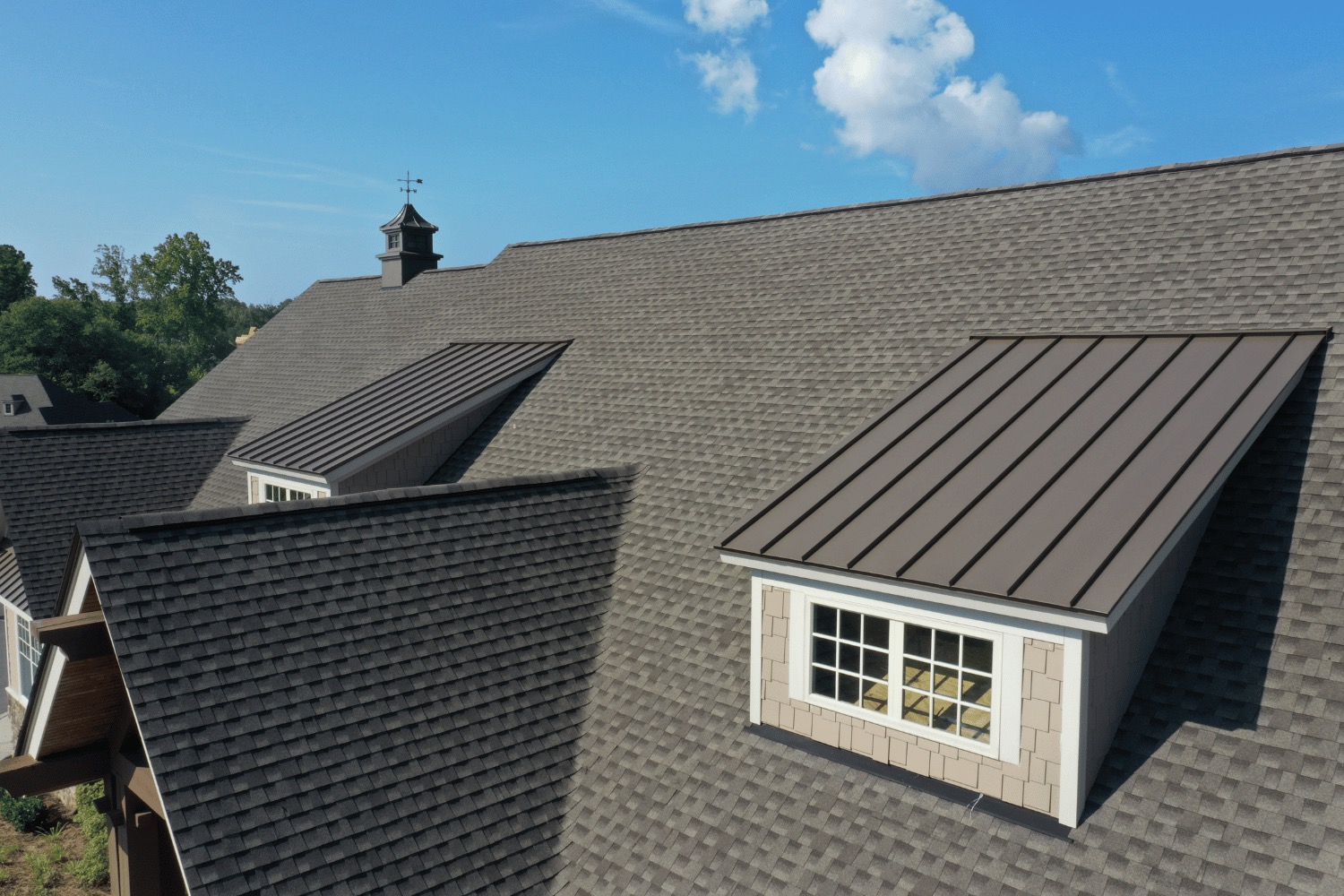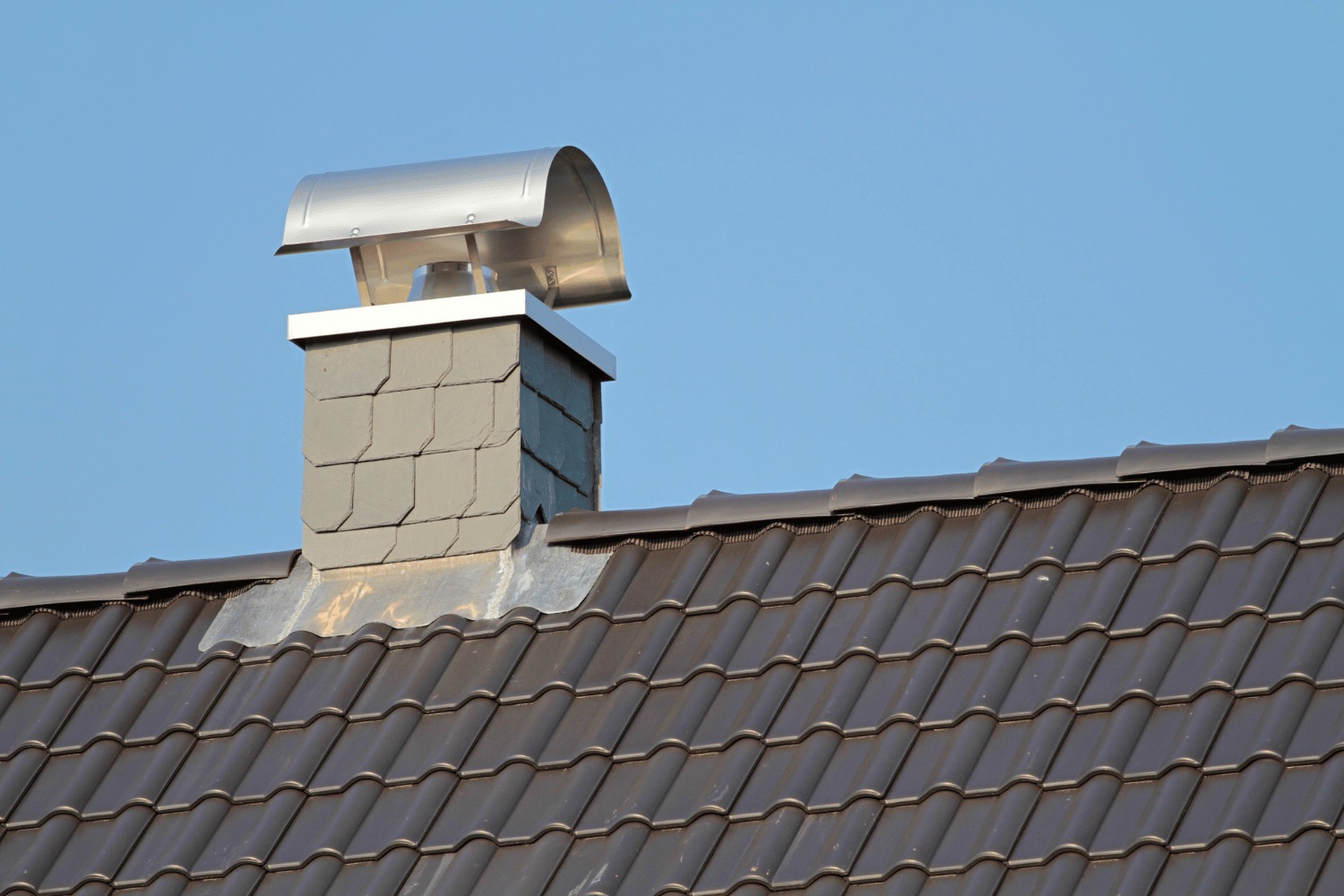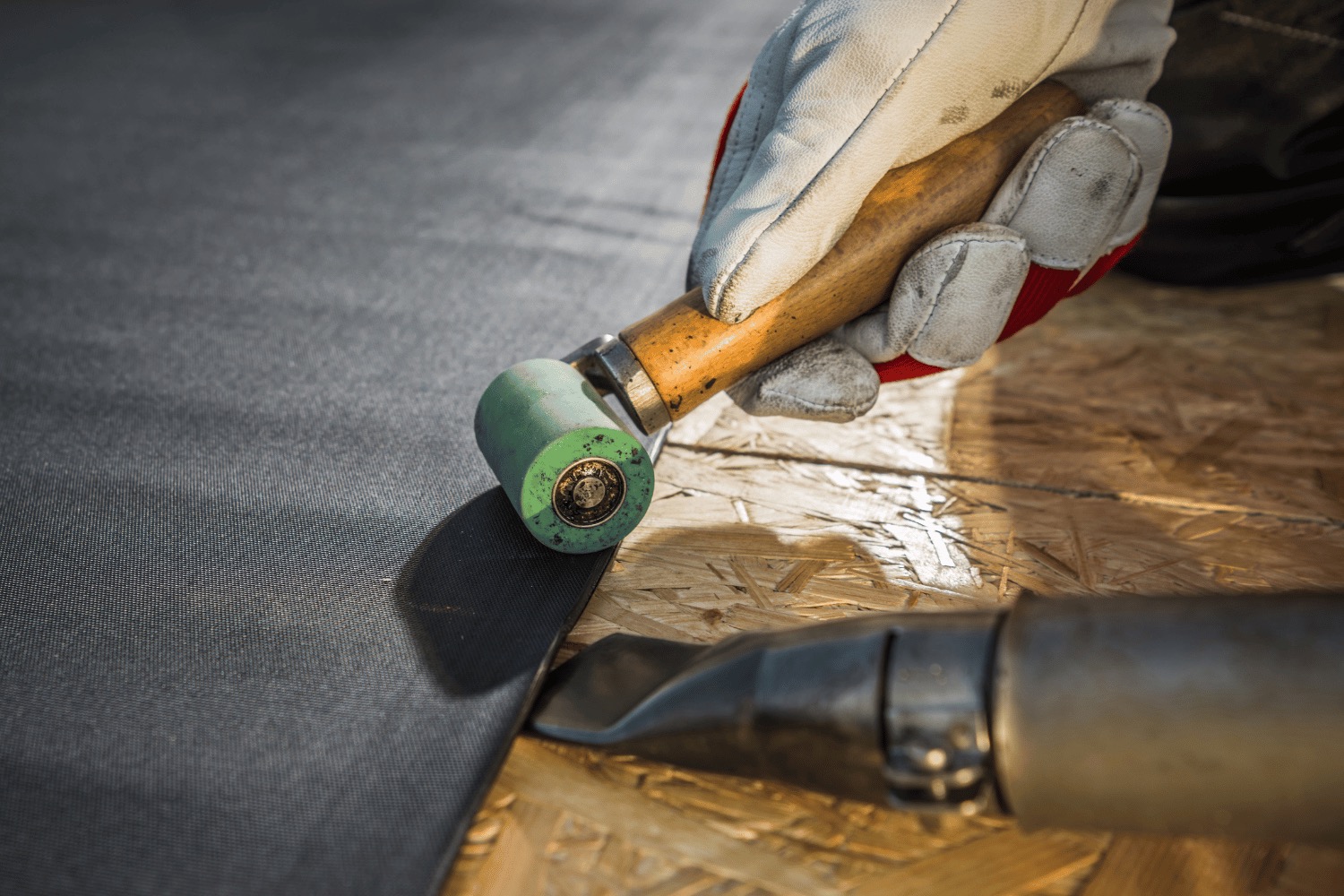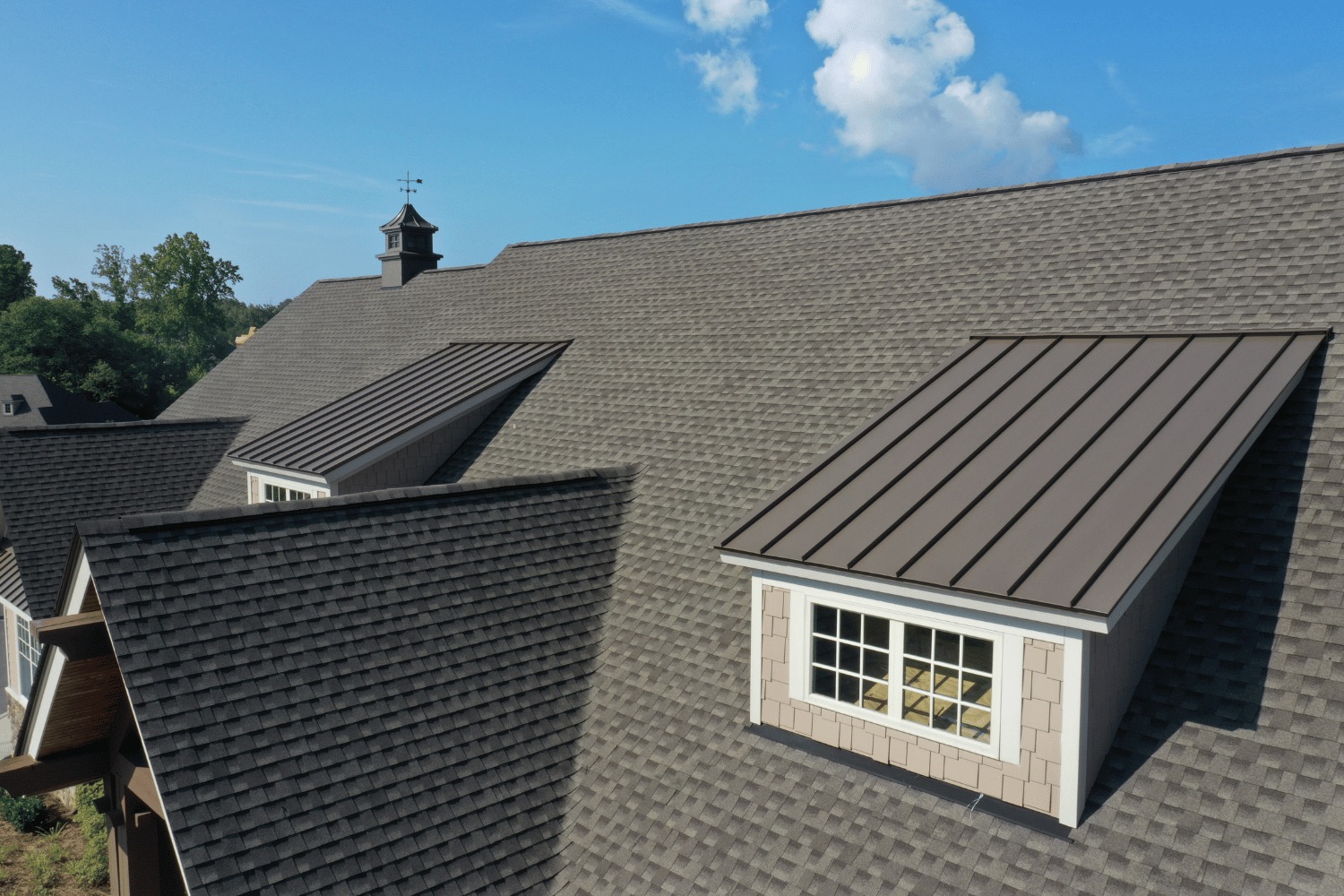Understanding roof cricket is essential for any homeowner dealing with potential water damage on their roof. These structures are pivotal for diverting water and preventing accumulative damage, especially around your roof’s more vulnerable features. This article offers a straightforward walkthrough of what roof crickets are, when and why they’re needed, and how they’re installed and maintained to bolster your roof’s defense against the elements.
Key Takeaways
- Roof crickets are essential structures designed to divert water away from vulnerable areas such as chimneys and skylights, protecting the roof from water damage and extending its lifespan.
- Installation of roof crickets is influenced by factors such as building codes, the size and slope of the roof, and regional weather patterns, with materials selected for durability and weather resistance.
- Maintaining roof crickets through regular inspection, prompt repairs, and ensuring proper drainage is vital for their efficiency and the overall integrity of the roofing system.
Decoding the Purpose of Roof Crickets

Illustration of a roof cricket diverting water away from a chimney
Roof crickets are the guardians of your roof, standing watch at the most vulnerable points where water loves to gather. These triangular structures are meticulously crafted to guide water away from places like chimneys, skylights, and other roof protrusions, ensuring that water flows harmlessly towards your gutters instead of causing mischief. Their role is crucial; by preventing ponding, they extend the lifespan of your roofing materials and protect the underlying structure from the insidious creep of water damage. Think of them as your personal roofing sentinels, deflecting the elements and preserving the integrity of your home.
Installing roof crickets is not just a practicality; it also translates into a wise economic choice. Each redirected raindrop equates to potential savings on future roof repairs. Their strategic placement behind roof penetrations like chimneys plays a critical role in mitigating the risk of leaks and structural damage by ensuring that water doesn’t have a chance to pool and penetrate. With roof crickets installed, you can rest assured that your home is well-protected.
The Anatomy of a Roof Cricket
A roof cricket’s design is a masterclass in efficiency and simplicity, especially for a low slope roof system. Picture a triangular structure snugly installed behind a chimney or skylight, its sloping sides and a small ridge on top working in concert to redirect water away from your roofing system’s critical elements. The cricket’s gable design isn’t just for aesthetics; it’s engineered to match the slope of your roof, allowing water to flow smoothly towards drainage points.
Whether your roof is a steep mountain or a gentle hill, crickets can be tailored to fit. They can mirror the pitch of your roof or offer a steeper angle for more aggressive water diversion, referred to as ‘saddles’ in the roofing vernacular. The ridge must be level, and the sides must align with your roof’s slope, creating an effective channel that prevents water from pooling against the chimney and inviting issues.
Roof Cricket vs. Traditional Roof Design
Although traditional roof designs serve their purpose, they often lack in their ability to prevent water and debris accumulation at critical points. This design shortcoming is addressed by roof crickets. They stand as a bulwark against the potential damage caused by standing water, ensuring that even heavy rainfall is managed and redistributed to safeguard your roofing materials from deterioration. In addition to roof crickets, roof curbs can also play a role in enhancing the overall protection of your roofing system.
It’s this proactive approach to water management that sets roof crickets apart. By eliminating water ponding and the risk of structural damage that comes with it, they not only extend the lifespan of the roof but also offer a cost-effective preventative measure.
The difference is clear: worthwhile investment roof crickets are not just an addition to your roof; they are a strategic enhancement that serves to protect your investment for years to come.
When and Where to Install Roof Crickets

Illustration of roof crickets installed behind a chimney
The choice to install a roof cricket is significant and not a ubiquitous necessity for all rooftops. These architectural features are most effective when placed behind chimneys, particularly those that boast a width of 30 inches or more and find themselves on the downslope of your roof. If you’re the custodian of a commercial building, roof crickets become even more imperative. Their presence ensures that water is channeled into the drainage system, away from areas that would otherwise be prone to damage.
In regions graced by heavy snowfall, the addition of a metal or plastic cover over the roof cricket can offer an extra layer of defense against water ingress, preventing the roof structure from sagging under the weight of the elements. This is especially important for wood framed structures covered by these materials. It’s about creating a roof that’s not just weather-resistant but weather-wise, ready to handle whatever the skies deliver.
Building Codes and Roof Cricket Requirements
The necessity of roof crickets isn’t merely dictated by practicality; legal requirements also play a role. Building codes have weighed in on the matter, requiring the installation of a roof cricket on the ridge side of chimneys wider than 30 inches — a clear mandate to ensure proper water drainage. These regulations underscore the essential nature of roof crickets in maintaining the integrity of your roofing materials and preventing their degradation due to water accumulation.
Following building codes goes beyond mere compliance; it’s about crafting a durable cricket with accuracy and proficiency. Roof cricket building codes on certain chimneys aren’t just recommended; they’re mandated, highlighting their importance in the grand scheme of roof construction and regulatory compliance.
Identifying High-Risk Zones on Your Roof
Some zones of your roof are more susceptible to the whims of water than others. Areas around large rooftop units like HVAC systems and unprotected skylights are particularly vulnerable to ponding, as water seeks out any opportunity to collect. It’s in these high-risk zones that contractors often install roof crickets, positioning them on the higher side of chimneys or at the meeting point of different roof sections to ensure that water is diverted rather than accumulated.
For chimneys that sit at the bottom of a roof slope or are surrounded by slopes that direct water towards them, the installation of a roof cricket is critical to prevent leakage. In regions with substantial rainfall or snow accumulations, the design of chimney crickets is customized to ensure that water is effectively steered away from the chimney base. Identifying these zones is the first step to fortifying your roof against the elements.
Selecting Materials for Your Roof Cricket

Illustration of different materials for roof crickets
Creating a roof cricket resembles the selection of suitable battle armor; chosen materials should be sturdy, durable, and prepared to withstand any weather conditions. For steep-sloped roofs, the traditional wood framework provides a sturdy foundation, while metal flashing or asphalt shingles shield it from the elements. On the other hand, low-sloped roofs, such as a flat roof, might call for a more specialized approach, utilizing sloped rigid insulation beneath the membrane roofing system for optimal protection.
Metals such as copper and galvanized steel are often the materials of choice for roof cricket construction, thanks to their exceptional resistance to rusting and corrosion. In the commercial realm, tapered insulation panels are frequently employed as a roofing material to create the necessary slope for water diversion, marrying functionality with a keen awareness of the roofing system’s specific needs.
Compatibility with Roofing System
The interdependent relationship between a roof cricket and the roofing system it safeguards is of paramount importance. The materials used for the cricket must be in harmony with the roof’s slope and the maximum acceptable length to width ratio, a calculation that varies depending on the roof’s surface slope. For the flat and low-slope roof systems that are common in commercial buildings, materials such as insulation are typically chosen for their compatibility.
A metal roof cricket, seamlessly integrated with a metal roof, is a prime example of this compatibility in action. The necessity of roof crickets on flat or low-slope roofs is particularly evident, as they play a pivotal role in preventing water collection and ensuring proper runoff. Moreover, taking into account the roofing materials and regional weather conditions, such as high snowfall areas and extreme temperatures, is essential for the cricket’s compatibility and effectiveness.
Durability and Weather Resistance
The true test of a roof cricket lies in its ability to endure. The materials selected must be durable and capable of withstanding diverse weather conditions over extended periods. That’s where metals like copper and galvanized steel come into play, offering high resistance to the elements and ensuring the roof cricket remains steadfast through seasons of rain, snow, and sunshine.
Incorporating metal flashing into the cricket’s construction is not just about durability; it’s a crucial step in creating an impenetrable barrier against water seepage into the roof deck. This preventive measure is key to averting potential leaks and the associated structural damages they can bring about.
Installation Insights: How Contractors Install Crickets

Illustration of contractors installing roof crickets
The roof cricket installation involves several steps:
- Take meticulous measurements of the chimney, roof, and slope, often creating full-size layout drawings to ensure the cricket is perfectly sized for its role.
- Remove the existing shingles.
- Assemble and install the cricket frame on the roof, marking the beginning of its transformation into a water-diverting powerhouse.
The process of installing a cricket on a chimney includes the following steps:
- Constructing a wooden frame to create the shape of the cricket.
- Applying a waterproof barrier material around the chimney and over the cricket to prevent water infiltration.
- Fitting new shingles to cover the cricket.
- Installing metal step and counter flashing over the cricket to ensure a watertight and seamless integration with the rest of the roof.
By following these steps, you can effectively prevent water damage and maintain the integrity of your roof.
Expert Techniques for Securing Roof Crickets
Safeguarding a roof cricket from the elements requires a collection of specialized techniques. Strong wind gusts are no match for a cricket that’s been securely fastened to the home, a non-negotiable aspect of installation. Beneath the cricket, a rubber ice and water shield serves as a waterproof underlayment, ensuring no leaks threaten the sanctity of your abode.
To achieve a watertight seal around the chimney, contractors employ methods such as creating reglets for chimney apron and counterflashing, securing with lead wedges, and meticulously installing shingles and step flashing. It’s also essential to ensure that all fasteners on the cricket are securely tightened to prevent the weakening of the structure over time, thus maintaining its effectiveness and integrity.
Ensuring Proper Slope and Drainage
The success of a roof cricket hinges on its ability to:
- Encourage proper drainage
- Direct water toward gutters, scuppers, or roof drains
- Especially on commercial rooftops where water accumulation is a common concern
The recommended slope of the roof for a roof cricket, such as the one exemplified by installations by WNC Roofing, is often 1/2 inch per foot, a specification that ensures adequate drainage and the cricket’s performance.
Chimney crickets, in particular, require a design that considers the unique structure and positioning of the chimney, often resulting in a slope that’s double that of the roof itself. This design choice is crucial in preventing water ponding and the formation of ice dams. The effectiveness of the cricket’s water diversion also relies on the slope of the cricket valley, which must be independently evaluated from the material slope to guarantee proper drainage.
Maintenance Matters: Keeping Your Roof Cricket in Top Shape

Illustration of a roof cricket being inspected and cleaned
a roof cricket holds equal importance to its installation. Timely maintenance ensures that the cricket continues to operate efficiently, allowing for the early detection of issues and their swift resolution. Regular inspections are key, with particular attention to signs of wear or damage such as gaps in the shingles or loose fasteners. Addressing these issues immediately can prevent them from escalating and causing further damage.
Moreover, maintaining the cricket’s sealing is necessary to prevent moisture penetration, which could compromise the roof’s structure. Ensuring that all fasteners remain secure is vital to maintaining the structural integrity of the roof cricket over time, safeguarding the roofing system from failures due to inadequate support.
Additionally, periodic removal of debris or moss buildup on the cricket is crucial to prevent water from pooling and to ensure the cricket performs its role of water diversion effectively.
Regular Inspection and Cleaning
To avert issues before they arise, contractors suggest inspecting the area around a chimney and roof cricket at least once a year or every two years. Such regular checks can reveal potential problems that could impede water flow. As part of ongoing maintenance, it’s vital to clear away any debris and moss that may have accumulated, ensuring that water can flow unobstructed and prevent any blockages that could lead to damage.
Addressing Repairs Promptly
Prompt action is the best defense when it comes to maintaining your roof cricket. Addressing repairs as soon as wear or damage is detected can prevent more extensive and costly repairs down the line. Inspecting for signs of damage such as gaps or loose fasteners and repairing them immediately is crucial for the longevity of your roof cricket and, by extension, your entire roofing system.
Frequent inspections and swift responses to signs of wear or damage, such as gaps in the shingles or loose fasteners, are essential to keep your cricket in top form.
Why Investing in Roof Crickets Is a Smart Decision
Investment in roof crickets goes beyond immediate advantages; it forms part of a long-term plan for roof preservation. While the installation cost, which typically ranges between $3,000 to $6,000, may seem steep, it’s a drop in the bucket compared to the potential savings on future roof repairs. The upfront cost is influenced by several factors, including:
- chimney size
- roof materials
- accessibility
- labor costs
All of these are worthwhile considerations when it comes to protecting your property.
Moreover, adding crickets during roof remodeling or replacement offers several benefits:
- Enhances the roof’s ability to handle water effectively
- Contributes to the overall longevity and prevention of water damage
- Creates a sturdy and reliable roof that stands the test of time and the elements
- Proves to be a wise and prudent investment for any homeowner
It’s a strategic move that pays dividends in the form of a sturdy, reliable roof.
Tailoring Roof Crickets to Unique Architectural Features
Roof crickets are not only functional but also possess a beautiful versatility. They can be tailored to fit the unique contours and features of your roof, ensuring that every nook and cranny is protected from water damage. In areas such as near parapet walls, crickets become necessary to prevent water from pooling in places that scuppers and the general roof design may neglect. It’s this custom approach that elevates a standard roofing system to one that’s fully equipped to handle the specific challenges posed by your property’s architecture.
Whether you’re dealing with a steeply pitched roof or one with a multitude of angles and intersections, roof crickets can be designed to fit seamlessly. This adaptability ensures that water is efficiently diverted away, safeguarding your home or commercial property against the risks of water ingress. By considering the unique architectural features of your property, you can ensure that your roof is not only water-resistant but also tailor-made to handle the specific demands of your environment.
Summary
To conclude, roof crickets are an essential component of a well-designed roofing system. They play a crucial role in diverting water away from vulnerable areas, preventing damage, and extending the lifespan of your roof. Whether you’re dealing with steep slopes, low-slope systems, or unique architectural features, there’s a roof cricket solution that can be customized to meet your needs. Investing in the installation and maintenance of roof crickets is not only a wise decision for the structural integrity of your property but also a cost-effective strategy for long-term savings.
Frequently Asked Questions
How to determine roof cricket?
To determine a roof cricket, remember the general rule of making the cricket panel slope twice that of the roof field or tapered slope for effectiveness. The cricket valley slope is a critical aspect in determining the cricket’s effectiveness.
What exactly is a roof cricket and where is it installed?
A roof cricket is a triangular structure installed behind chimneys or other roof protrusions to divert water away and prevent potential damage. Consider installing it at points on the roof where water is likely to accumulate.
How do building codes affect the installation of roof crickets?
Building codes mandate the installation of roof crickets for chimneys wider than 30 inches to ensure proper water drainage and prevent roofing material degradation. Compliance is essential for both regulation and functionality.
What materials are commonly used to construct a roof cricket?
Roof crickets are commonly constructed from wood, metal, or rigid insulation, and are covered with metal flashing or roofing materials like asphalt shingles to protect against the elements.
How often should I inspect and maintain my roof cricket?
Inspect and maintain your roof cricket at least once a year, especially after severe weather events, to ensure proper water flow and prevent blockages. Regular cleaning to remove debris and moss is also important.

